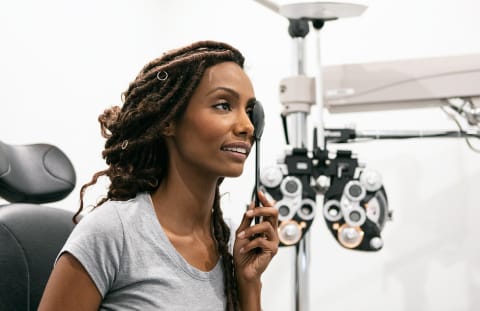There are two main types of diabetes. With type 1 diabetes, the body doesn’t make insulin, or makes so little insulin you need to take insulin to live—and while it was once known as a childhood disease, it actually occurs across a variety of ages, body types, races, and sizes. In type 2 diabetes, the body either doesn’t make insulin or doesn’t use it well. Type 2 diabetes occurs most often in adults and is the most common form of the disease. With either type, the most important thing is early detection and treatment, which can help manage the disease and prevent complications2, such as heart disease, stroke, kidney failure, and even blindness! That’s where your eye health comes in. “Generally, diabetes affects blood vessels in our body and weakens the vessels in the back of the eyes,” said Christine Joy, a VSP network optometrist. “This can trigger symptoms such as blurry or cloudy vision, seeing dark spots, or flashing lights. If an eye doctor catches these symptoms early enough, 95% of vision loss caused by diabetes can be prevented.” According to the ADA, diabetes is the leading cause of vision loss in people 18 to 64 years old—but it doesn’t have to be that way. Devon’s first book, Earth Women, is coming soon. To learn more, join the mailing list, and receive updates, head to www.devonbarrowwriting.com.




